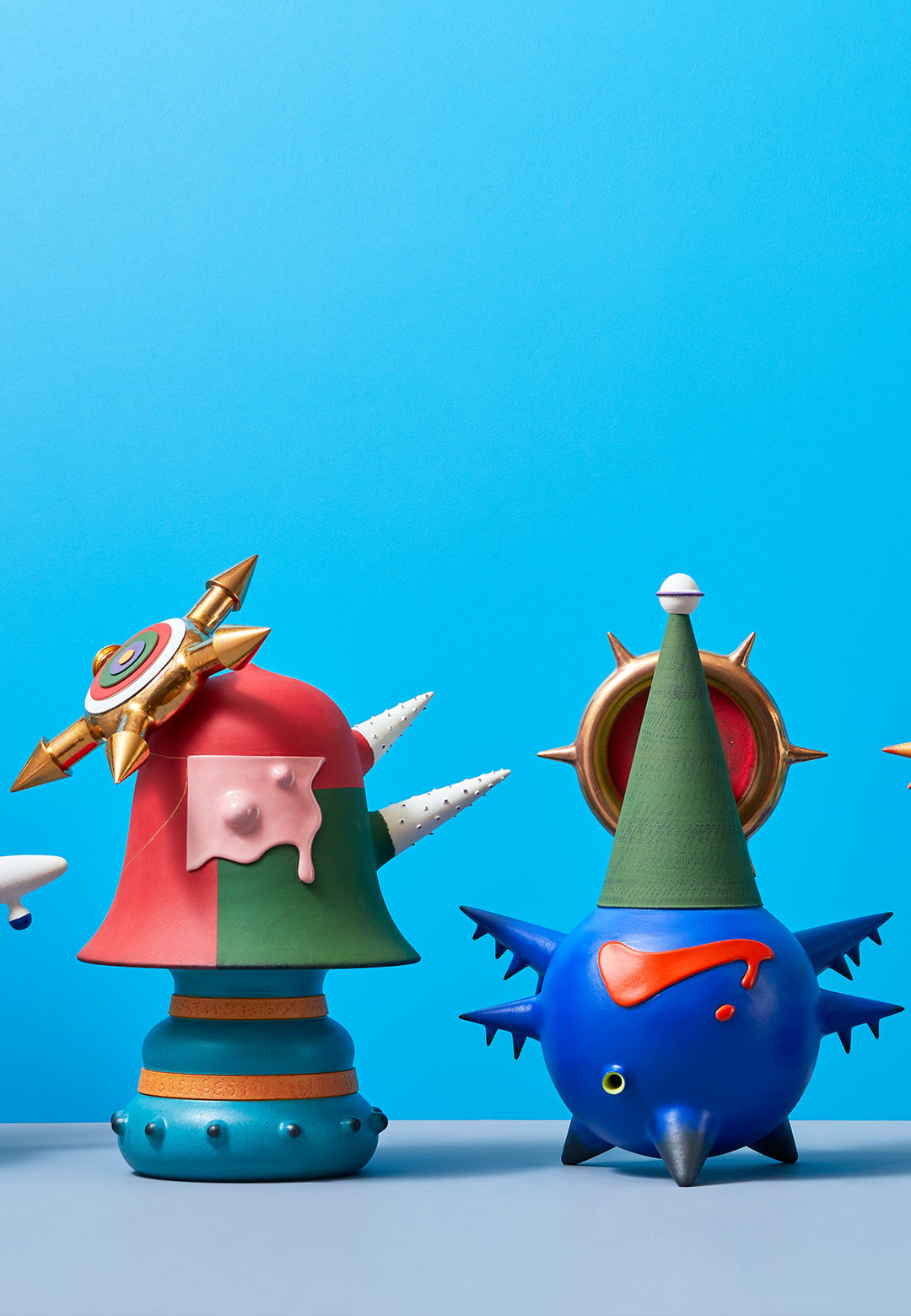What forms do memories take? You take down a book from your shelf, a slip flutters out. Suddenly you are transported to a cafe you went to three years ago. Memories are strange things, as much trapped in objects and places as they are in our minds. Art is translating this feeling and the experience of it into something new, whether consciously or not. Emphasising the entwining of our memories and how they shape the art we make, Japanese ceramic artist Tomoya Sakai’s ceramic sculptures are explorations of the experiences he has had. Three ongoing series, ReCollection, Heritage and SPIRIT, developed by the artist investigate themes of personal and collective memory as abstract artworks.
With ReCollection, as the artist tells STIR, the design process is almost subliminal. “While moving my hands unconsciously, I explore some images in my memory…The finished works may be what you might or might not have seen. I'm aiming to form the shapes that evoke your memories,” he goes on to remark. The sculptural designs are delightful, blob-shaped and alien-like forms that, as Sakai mentions, are the shapes his hands subconsciously create while thinking of a past memory. The clay sculptures almost become the manifestation of the emotions he felt at the time. As he notes, the craftsmanship of pottery is a way for him to clarify the core emotion of an experience from the other information surrounding it. So, on the one hand, you may have blobs with tree-like objects growing out of them, sculptures that look almost like faces, on the other, the collection includes totem-like undulating vase designs; all painted in vibrant colours.
The imagery in the Heritage series, distinct from the abstractness of the ReCollection series, is derived from Sakai’s conversations with other people. He takes inspiration for the artworks by talking to them, and listening to their memories, then transposing them onto the potters wheel. Not only do our memories define us, but they also connect us to each other. To the things we have felt that are universal while being specific to us. By abstracting strangers’ memories, the Japanese artist asks viewers to consider different perspectives, and how we are intertwined by the experiences we share. He goes on to give an example from the Heritage series, “I interviewed my grandmother about her memories from childhood to the present. Among the works inspired by the interviews are the bomb falling right near her house during wartime, the dragon she saw when she was little, and her friend visiting her while the snow was falling and telling her an important story.” Some of the references such as the bomb are quite literal in the works mentioned, but they highlight how memories are also messy things, not just one kind, and how they can be open to interpretation.
Between unconsciousness and consciousness or abstraction and concreteness, the ReCollection and Heritage series draw on personal experiences. On the other hand, the latest SPIRIT series is a deviation from the personal and embodied aspect of his work. It reflects on the same theme of recollections but gives it a mythic power. After all, memories, remembrances and stories are what give rise to myths. Heroes and kings become gods by the stories society chooses to retell.
Thinking about today’s media saturated age and the dissonance it brings between people and collective identities, Sakai considers, “What is the god in today’s Japan? Living in the contemporary Japanese culture, which introduces various elements and evolves in its own way, I have created works that can be called 'the guardian deity of memory'; while incorporating gods from ancient and modern times.”
The sculptures in the series seem to build upon the previous collections. They are just as strange; a bricolage of different shapes and references. Blobs with wings, an object that looks like an aeroplane, an artwork that resembles scoops of ice cream with eyes. Perhaps what’s most interesting is the thin gold strand that runs through some of these objects, which could be a reference to kintsugi. The human yet inhuman, recognisable yet bizarre sculptural artworks in the series are intended to be evocations of the present-day culture of manga, anime, or idols, which Sakai admits is a big influence on him. Sakai was introduced to ceramics during university, and his artworks are part of museum collections in Asia as well as Europe.
His design process brings out a tension between interpretation and objective materiality that is also evident in the material he chooses to work with, clay—hard and soft at the same time—that carries the memories of its creator. The objects might just be playful, vibrant abstract renditions of things the artist gravitated towards. But, by focusing on the theme of memory, Sakai engenders reflections on how objects shape our personality and worldviews, and how we shape them in turn. How memories make us individuals but also bring us together. In the end, we all want to be remembered, and we all want to leave a trace behind, and that is what Sakai's ceramic art highlights.






 Sign in with email
Sign in with email








What do you think?